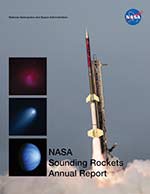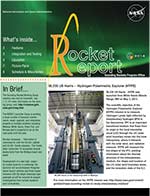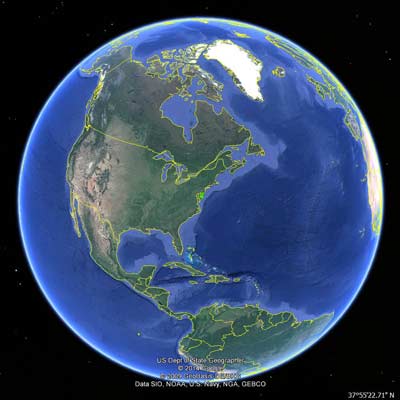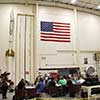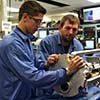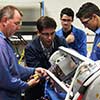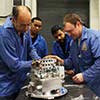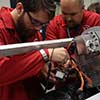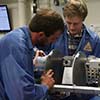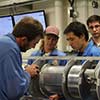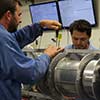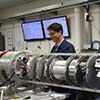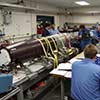
46.012 UO KOEHLER/UNIV OF COLORADO
ROCKSAT-X
- Mission
- Vehicle
- Launch
- Photos
The RockSat-X carries student developed experiments and is a follow on mission to RockOn and RockSat-C. RockSat-X experiments are more advanced than RockOn and RockSat-C and include full featured sounding rocket support systems, such as telemetry, attitude control and recovery. RockSat-X experiments are exposed to the space environment enabling measurement of variables outside the payload.
Experiments on board this mission include:
Capitol Technology University (CTU)/Project Hermes
The project goal is to test OSHComm (Onboard Satellite Hotspot Communications) System using TCP/IP Protocol by tapping into an existing network of communications satellites. The project uses Commercial Off the Shelf (COTS) components and the Iridium satellite network. The experiment uses a web-based interface to, receive telemetry, send commands, see data transfer and monitor health and safety information Additionally, the experiment will attempt to capture an image during the flight as requested by ground controllers, and send in through the Iridium network.
University Of Hawaii Community College System/Project Imua:
The primary mission goal for Project Imua is to encourage UHCC students to explore and enter STEM-based careers by engaging in team-oriented, problem-solving activities that emphasize the integration process involved in the design, development, construction, testing and documentation of launch-ready CubeSats and scientific payloads.
The scientific mission of the experiment is to make direct measurements of solar spectrum UV components without atmospheric absorption. Variations in UV components of the solar spectrum directly affect the thermosphere/ionosphere system and ultimately climate. Contribution of UV variation in the 200 to 400nm range to total solar irradiance is highly uncertain. Data will be analyzed to contribute to understanding of solar dynamics.
The experiment will collect one full spectral sweep (at 2ms integration time: 4.096 s/sweep) of data between 200-600 nm with 0.4 nm resolution. Post processing data and correlate to solar activity and collect rocket orientation data from photo sensors
Virginia Tech (VT)
Virginia Tech students will attempt to successfully complete a 3D print in the space environment and to collect data on how to improve the shortcomings of the VT 3D printer design. This is a proof of concept mission for 3D printing in space and collects information on the effects of changing gravitational loads on 3D printing
University of Nebraska Lincoln (UNL)
The experiment from the University of Nebraska Lincoln will compare buoyant convection on the ground in the presence of gravity to the expected absence of buoyant convection in the microgravity environment. Additionally the experiment will characterize crystal growth in microgravity through the study of buoyant convection in a supersaturated solution of sodium acetate trihydrate (SAT)
The experiment will provide more data on crystals formation in microgravity, specifically addressing the question why crystals grown in space are larger and purer than ones formed on the ground.
Video cameras will record reactions.
A thermal tracer will be used to visualize buoyant effects during crystallization.
The crystallization reaction will begin via a seed crystal planted into a sodium acetate trihydrate (SAT) solution by a linear actuator. A thermal tracer will be used to visualize buoyant effects during crystallization. The reactions will be recorded on video.
Northwest Nazarene University (NNU)
Experiments from Northwest Nazarene University will demonstrate the usefulness of flexible electronics when applied to data collection and storage in space-flight applications. Specifically the experimenbt tests a flexible ADC (FLeX ADC) in open space environment by opening and closing its enclosure.
NNU students will also test electronics developed for use on a CubeSat, by deploying the test electronics from the payload.
University of Puerto Rico
The University of Puerto Rico experiment will collect micrometeorites using two deployed collection panels, namely the Organic-Collector for Bio-Analytical Investigation that Withstands Harsh Aerospace Navigations (O.B.I.-W.H.A.N).The collection panels are sealed to withstand re-entry conditions and final astrogenomic analysis in a lab setting. Additionally, the experiment’s impact detection system will serve as a collector for organic materials, which will be analyzed using Next Generation Genomics in order to study the possible origins of life as stated in the Panspermia Theory. Ultra high definition video will be recorded looking outwards from the aft end of the experiment section where micrometeorites are expected to be collected from.
X-HD Experiment Deck
The X-HD Experiment Deck will record HD video of flight and all experiments and provide a flight demonstrations of new experiment hardware for RockOn, RockSat-C/-X. The deck includes 8 GoPro cameras, four of which are deployed and retracted on a track system for viewing down the length of the experiment section and four are pointed perpendicular to the thrust vector that are stationary.
For more information about RockSat-X, visit:
http://spacegrant.colorado.edu/national-programs/rs-x-2015-home
The Terrier-Improved Malemute is a two stage sounding rocket with a Terrier first stage and Improved Malemute second stage. This vehicle can reach altitudes of about 600 km. Payloads weighing from 400 to 1200 pounds can be flown.
Additional sounding rocket vehicles

